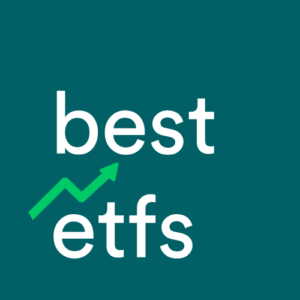Could now be your opportunity to place the Montaka Global Equities Fund (Managed Fund) ETF (ASX: MOGL) and the Vanguard Ethically Conscious Global Aggregate Bond Index (Hedged) ETF (ASX: VEFI) on your ASX investing watchlist?
Why do investors own the Montaka Global Equities Fund (Managed Fund) ETF?
The Montgomery MOGL Fund is an actively-managed portfolio that invests in a concentrated portfolio of global equities. The fund typically selects between 15-30 global equities and aims to pay a distribution of at least 4.5% per year.
According to our most recent data, the MOGL ETF had $83.38 million of money invested. Given its funds under management (also known as FUM or ‘market cap’) is less than $100 million, you should consider if this ETF is still too small and if it is sustainable for the ETF issuer. At Best ETFs we say an ETF with more than $100 million invested is typically more sustainable than one with less than $100 million (at least). However, there are exceptions to this general rule, especially if the ETF issuer/provider is reputable and committed to growing the ETF’s FUM through effective marketing strategies and distribution to financial advisers.
Fees to consider
According to our numbers, the annual management fee on the MOGL ETF is 1.32%. The issuer, Montaka, collects this fee automatically.
Meaning, if you invested $2,000 in the MOGL ETF for a full year you could expect to pay management fees of around $26.40. This fee is different from the fee you pay to your brokerage provider (e.g. CommSec, NabTrade, SelfWealth, etc.), which is the fee to buy or sell the ETF. In addition to a management fee charged by the issuer, be mindful to check the ‘spread‘ for the ETF.
A fee comparison
Fees aren’t the only key consideration for ETF investors, but it’s an easy thing to do. To understand if the ETF you’re looking at is too costly, compare it with other ETFs from the same sector, and against the industry average. For example, the average management fee (MER) across all of the ETFs covered by the Best ETFs Australia team was 0.5%, which is $10.00 per $2,000 invested. Keep in mind that small changes in the fees paid can make a big difference after 10 or 20 years. You should read the MOGL Product Disclosure Statement (PDS), available on the ETF issuer’s website, because it will detail the fees, tax implications and the latest information.
Don’t stop here, to get our full MOGL ETF review, click through to this ETF review page now.
Vanguard Ethically Conscious Global Aggregate Bond Index (Hedged) ETF
The Vanguard VEFI ETF provides investors with exposure to high-quality debt securities issued by governments, government-owned and government-guaranteed entities, and investment-grade corporate issuers from global markets. This ethical ETF excludes issuers with significant business activities in fossil fuels, alcohol, tobacco, gambling, weapons, nuclear power, and adult entertainment.
With our numbers for December 2020, VEFI’s FUM stood at $37 million. Given it has less than $100 million invested, ask yourself (or your adviser) if the ETF is still too small (and if you should wait to buy into it). If you’re concerned the ETF might not be established enough, compare it alongside one of the other Index sector ETFs, using our full list of ETFs.
Are the fees for the VEFI ETF bad?
Vanguard, the ETF issuer, charges a yearly management fee of 0.26% for the VEFI ETF. Meaning, if you invested $2,000 for a full 12-month period you could expect to pay a base management fee of around $5.20.
The management fee is above the average for all ETFs on our list of ASX ETFs, but keep in mind the ETF may be able to justify the higher price tag with superior performance over time.
To discover more facts about the VEFI ETF, read our free ETF investment report.
[ls_content_block id=”4954″ para=”paragraphs”]



